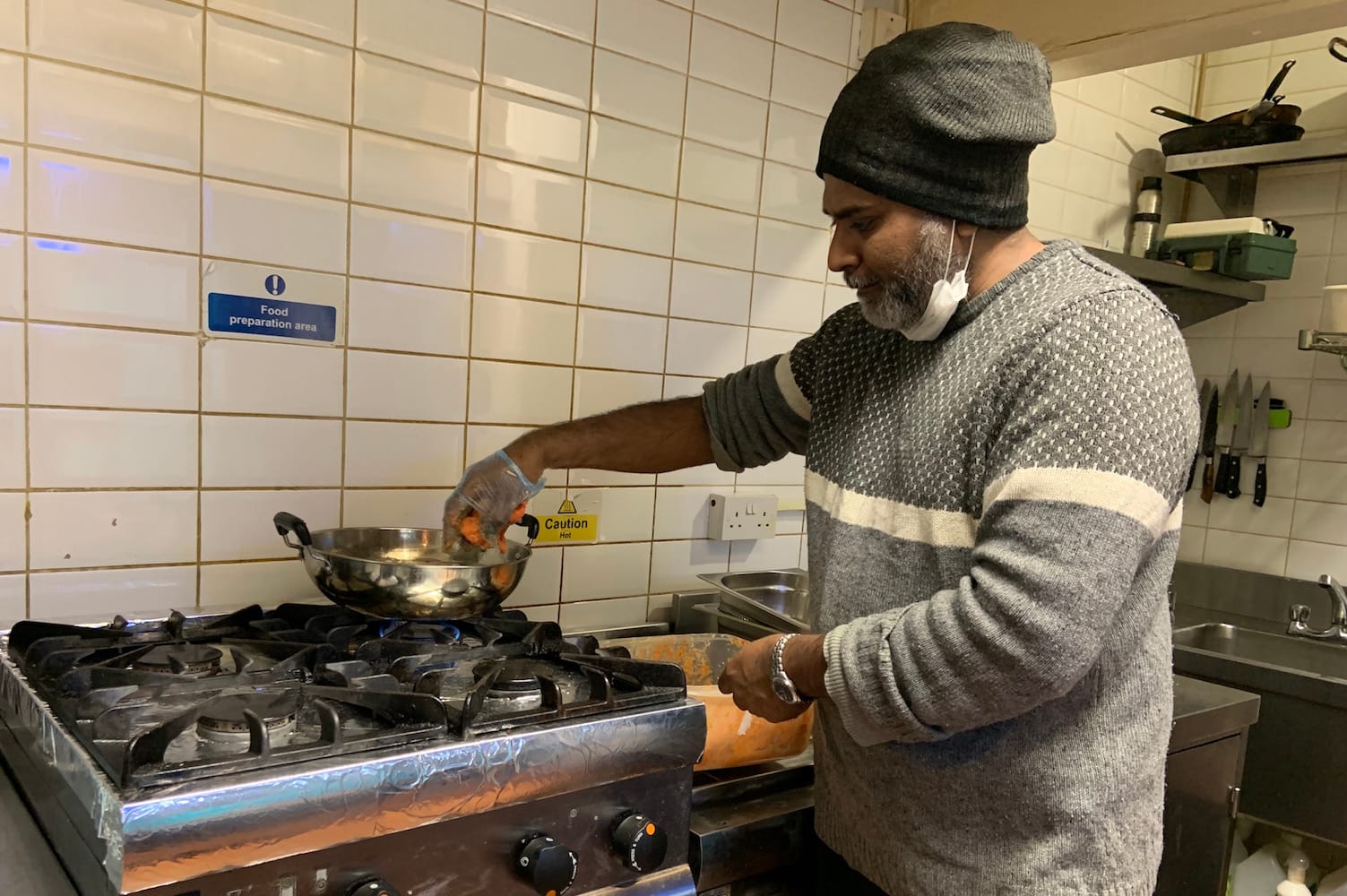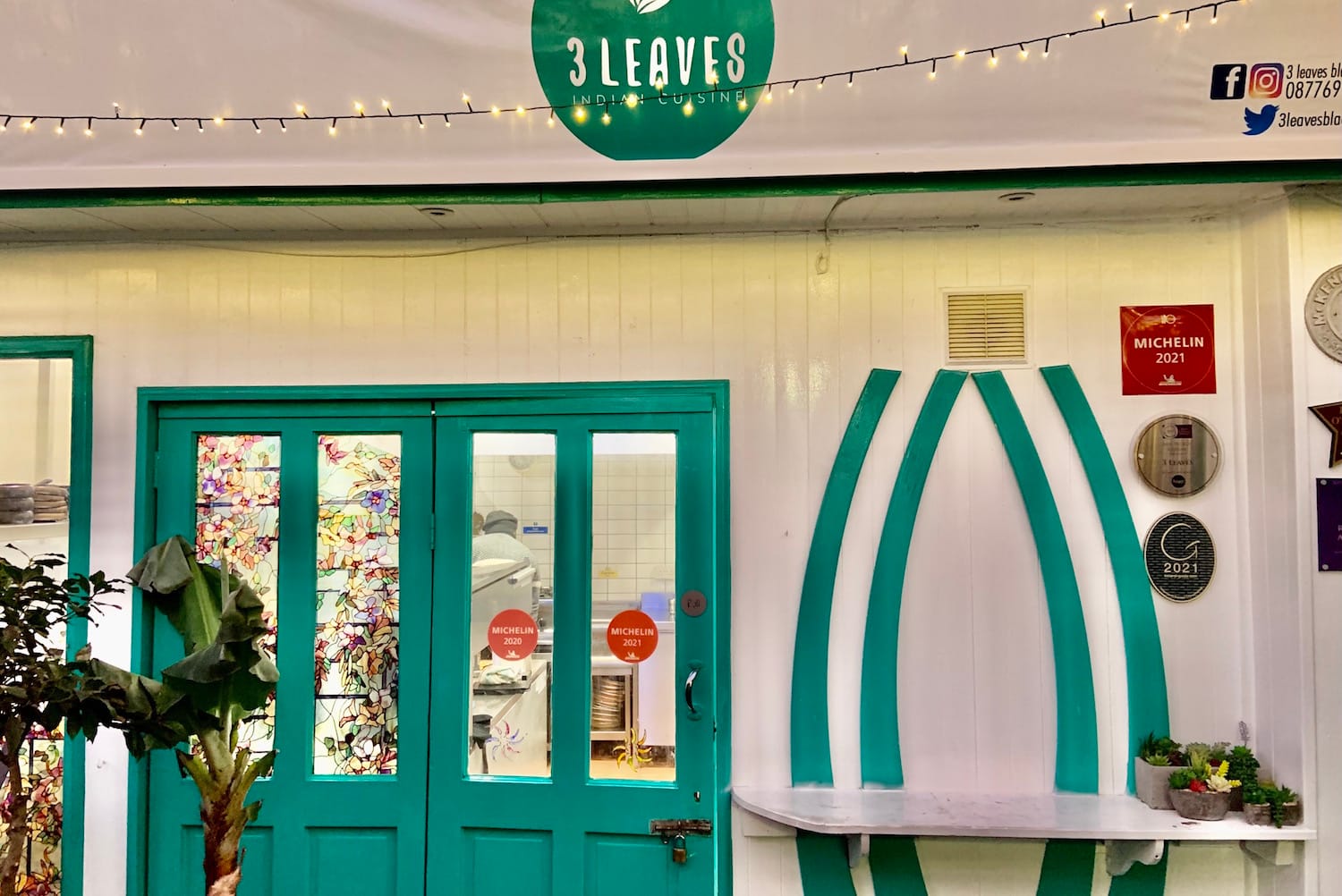What’s the best way to tell area residents about plans for a new asylum shelter nearby?
The government should tell communities directly about plans for new asylum shelters, some activists and politicians say.
Since the mid-20th century, it has spread across India, changing to please regional tastes. Now it has reached Dublin, in at least two forms.

“I had people asking me why I wasn’t doing Indian-Chinese food,” says Santosh Thomas, on a Tuesday in mid-December.
He puts a big plastic container of bright orange cauliflower florets on his kitchen counter. “Also, more people have been looking for vegan stuff,” he says.
Thomas checks the oil temperature, pulls on a blue plastic glove, and prepares to fry.
He is making gobi manchurian, a dish that, in this version at least, has battered and fried cauliflower florets coated in a deep orange gravy with a shredded Malabari paratha on the side.
Thomas and his wife Milie Mathew, who run the Indian restaurant 3 Leaves in Blackrock market, added the dish to their menu this past October.
“People have already mastered butter chicken and vindaloo. Why should I make it then?” says Thomas.
“Street food is different. It doesn’t need much prep work,” says Thomas. “Most Indians survive on street food.”
Thomas’ manchurian dish is new to Blackrock and is also relatively new to the world.
“The originator of any kind of manchurian is supposed to be Nelson Wang,” said food historian and chef consultant Pritha Sen, who is based in Gurgaon in India, in an email.
Born in 1950, Wang later went on to set up the China Garden restaurant in Mumbai, says Sen.
Wang supposedly first created a chicken manchurian, says Sen. But Mumbai and regional tastes demanded a vegetarian version, she says.
“Hence a gobi manchurian was born, which spread like wildfire,” she says. Outlets and street stalls across the south and north of India began to sell it, she says.
It spread organically, says Sen. “It’s a dish that appealed to Indian palates and was picked up by those who were selling what we call Indian-Chinese.”
“Wang had just added more stuff and a sauce to the very popular chilli chicken that the Chinese had introduced in Calcutta, and that was replicated with cauliflower,” she said.
“It was essentially batter fried pakoras in a spicy sauce. Some liked it sour, some sweet, some with more soy sauce,” she says.

As gobi manchurian spread around India, every region adapted it according to its tastes, she says. “Regional influence is what this dish is all about.”
“Eastern and western India love their fried stuff and South India their sharp and fiery spices,” says Sen. “North India is famous for its koftas.”
Even within Dublin, there are at least two varieties of manchurian to sample. In Blackrock, 3 Leaves serves one. On Talbot Street in the city centre, Samosa Express serves another.
It’s a vegetable manchurian, says Sumaiya Pila, one of the owners of Samosa Express.
That makes it tastier than cauliflower, she says, with vegetable balls in a spicy sauce and fried rice rather than a Malabari paratha.
Samosa Express is all about street food, said Pila.
She first tried manchurian herself in Rander in the state of Gujarat on the west coast of India where she is from, but she and her partner couldn’t find the popular dish here, she says. “That’s why we decided to introduce it.”
They added manchurian to the menu about six months ago. “It’s one of our bestsellers. We’re getting a lot of orders,” she says.
Thomas counts two main types of manchurian, he says. One veggie and kofta-like, the other is his cauliflower version.
Some people use ketchup, some don’t, he says. The sauce can be thick or thin. The kofta uses finely chopped onions, the cauliflower variant uses diced.
As Thomas talks, he effortlessly switches from English to Hindi. “There’s a famous saying,” he says, “which goes, ‘Pehno jag bhaata, khao mann bhaata.’”
Meaning, “Wear what the world likes, eat what you like”.
There are two ways to cook the cauliflower, says Thomas, in the 3 Leaves kitchen in Blackrock.
Plop it raw into the oil, or blanch it and later refry it, he says. “We partially cook the florets and keep them aside so we can just add the sauce later.”
He grabs a handful of the marinated cauliflower florets and places them into the hot oil. They’re coated already in a 1:1 mixture of cornflour and all-purpose flour, he says.
Cornflour alone makes the batter watery and runny, says Thomas. “So you need a balance of both. And you can see the cauliflower florets. I don’t want to make pakora (fritters).”
The florets sizzle in the hot oil. They’re bright orange from the yellow chilli, deggi mirch and turmeric, he says. “Street food vendors use food colouring to make it more red.”
“In Chinese cuisine, there is no manchurian,” he says. “This is desi. We use deggi mirch, kaali mirch and haldi. You need a desi tadka (a desi touch)!”
While manchurian traces its immediate roots to Nelson Wang’s kitchen in Mumbai, Sen the food historian says she would track its origins back further to the east of India and Kolkata.
Wang himself was born in Calcutta, says Sen, the food historian. (Now, officially Kolkata.)
Hakka and Cantonese Chinese people settled in the city from the 18th century onwards, she says.
“There was a time when Calcutta, a city of firsts, was the only one with Chinese restaurants in India,” says Sen. “Chinese travellers, tradesmen, Buddhist monks and scholars have come to India through the centuries.”
Sen says that Yong Atchew – who may have been a Chinese sailor, according to one academic paper – was the first to settle in India when, around 1780, Warren Hastings, who was Governor General on behalf of the British Empire, granted him land for a sugar plantation.
“Then followed a steady stream of settlers and sailors who jumped ship, carpenters, shoemakers, dentists and launderers to Calcutta with fresh migrations during the turbulent days of the Kuomintang rule followed by World War II and then Mao’s Revolution,” said Sen.
“And so the continued renewal of their cultural ties has helped to preserve the identity of the single largest group of Chinese in India who made Calcutta their home,” she says.
“The majority are Hakka, followed by the Cantonese. It was the latter who first took to setting up restaurants,” she says.
The last big wave of migration was in the early 1960s, during the Cultural Revolution, says Sen.
“So wherever you have Indian Chinese food in India, it has all originated from Calcutta, carried pan-India by the Calcutta Chinese,” says Sen.
Thomas takes the first batch of florets out of the wok. “This is now half-cooked. You can hear the sound. It’s crunchy,” he said, breaking off a small piece and putting it in his mouth.
“When I cook it for the final dish, I’ll put it into the oil again and this time the temperature will be very high.” Usually, he goes for 150–160°c, he says.
Thomas’ version of gobi manchurian is tangy with a slight sweetness.
He first heats some oil in a small wok and adds crushed ginger and garlic. Next, finely chopped white onions, diced red onion and red pepper.
He pushes the chopped onions around with a spatula until they lose their rawness.
A big spoonful of tomato and chilli paste, which he makes himself, is added to the cooked onions with some store-bought red chilli sauce and a dash of soy sauce. Two teaspoons of ketchup bring sweetness and colour.
When the sauce is ready, Thomas adds the fully fried cauliflower florets to the mix and gives it a good stir.
“Food is a religion,” he says as he ladles the gobi manchurian into a dish. “One that’s not based on fear but rather one that brings people and communities together.”

Get our latest headlines in one of them, and recommendations for things to do in Dublin in the other.